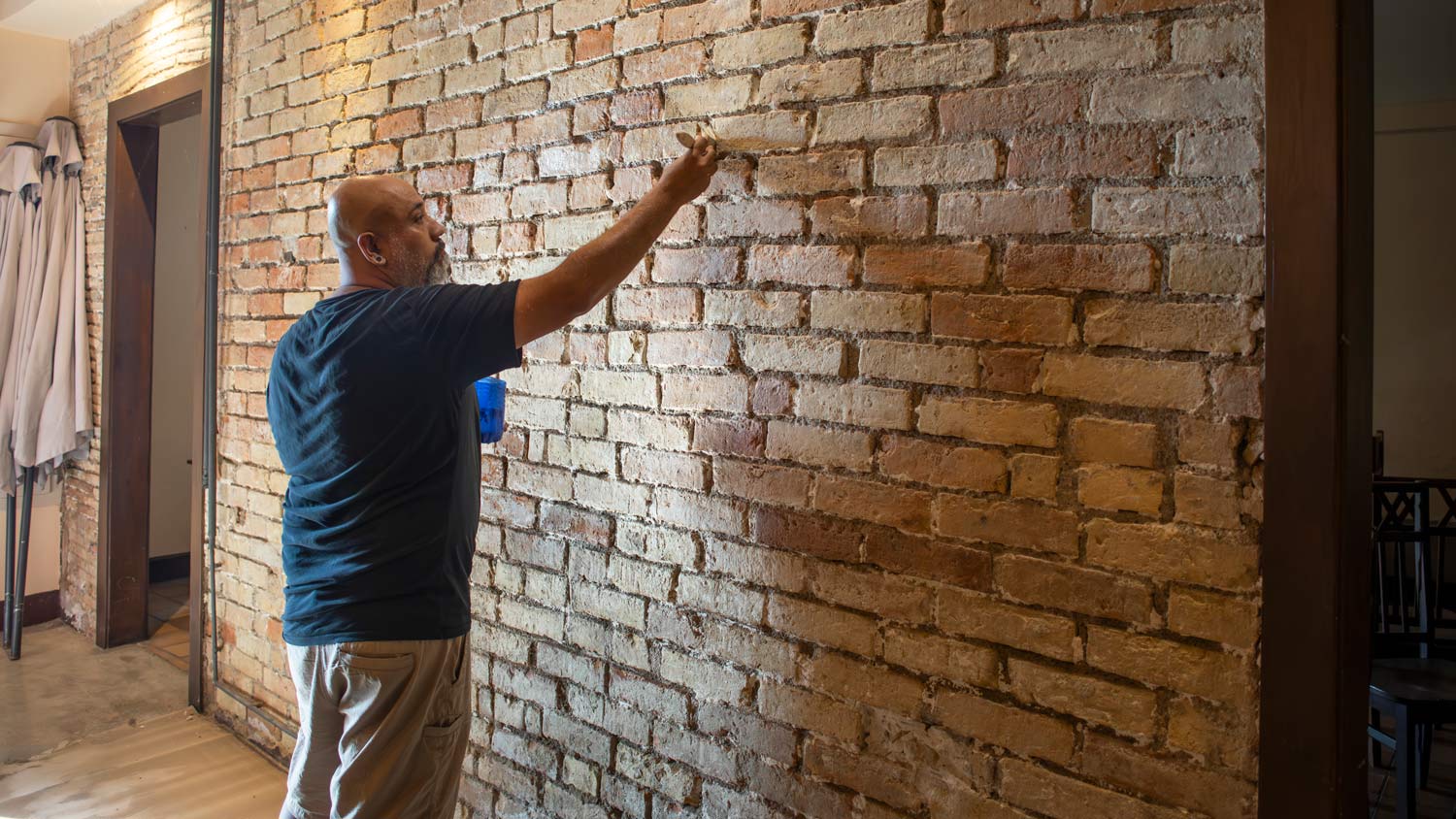
Powder coating can give your furniture, car, and other objects a new look. Learn what powder coating costs by object, size, and other factors with this guide.
A little facelift can go a long way


You can stain your home’s brick to refresh the color.
Cleaning the brick properly first is key.
Always use a sealant as the final step to ensure longevity.
If you’re looking to freshen up the appearance of your home’s brickwork, you may wonder—can brick be stained? With the proper preparation and the right type of masonry stain, you can indeed stain your home’s bricks to give them an impressive makeover. Here’s what to know about staining brick like a pro.

Before you kick off a brick staining project, it’s important you prepare the right way.
Preparation is key: Clean the brick thoroughly. Remove any dirt, debris, loose mortar, or previous coatings. A pressure washer is often the best tool for this. Allow the brick to dry completely before staining.
Sealing makes all the difference: Some interior or exterior brick stains benefit from a sealant applied after the stain has dried. This can provide added protection against the elements and make the color last longer.

Staining bricks involves more than just applying a coat of paint. It's about penetrating the brick's porous surface to create a long-lasting, natural-looking color.
First, you need to choose the right stain. Brick stains are specifically formulated to penetrate and bond with the brick. They are different from normal exterior or interior house paints, which sit on the surface and can peel or flake. Choose a stain designed for masonry and consider whether you want a solid color or a more transparent look. Test the stain in an inconspicuous area first to ensure you achieve the desired color.
Once you are ready to apply the stain, you can do so with a brush, roller, or sprayer. Multiple thin coats are better than one thick coat. This allows for even coverage and better penetration. Follow the manufacturer's instructions for drying times between coats to achieve the best effect.
Whether it's a spill or an attempt to reverse a previous staining project, removing brick stains can be a challenge. Here’s how you can remove brick stain:
Identify the stain: Knowing the type of brick stain you’re removing (e.g., oil-based, water-based, masonry stain) is crucial for choosing the right removal method.
Start gently: Begin with the least abrasive cleaning method possible. Try scrubbing with a stiff brush and a mild detergent solution.
Use chemical cleaners: If gentle methods fail, you may need to use a chemical cleaner specifically designed for removing brick stains. Always test the cleaner in a discreet area first to avoid damaging the brick. Follow the manufacturer's instructions carefully and wear appropriate safety gear, like rubber gloves, a mask, and eye protection.
Seek professional help: For stubborn stains or if you're unsure about the best approach, it's always best to consult a home painting company near you. These professionals have the expertise and specialized equipment to remove stains safely and effectively. They can also advise you on the best long-term solutions to protect your brick.
From average costs to expert advice, get all the answers you need to get your job done.

Powder coating can give your furniture, car, and other objects a new look. Learn what powder coating costs by object, size, and other factors with this guide.

The cost to paint a deck depends on its size, design, and whether you DIY. Read this guide to help set the budget for your deck painting project.

The cost to stain cedar siding largely comes down to the labor required. Learn how you can keep your costs down for materials, and when hiring a pro.

Are you looking to spruce up your porch with a fresh coat of paint? Read on for the best paint colors to maximize your home’s curb appeal.

Brick stain colors come in many shades, ranging from brown to red to gray. Keep reading to discover some of the best stain colors for your brick home.

In need of some stylish exterior window trim ideas? Explore 16 must-try styles and colors and find out what window material will suit your aesthetic.